
Latest map of 16 Super Project Bundles. Dots are “pedestrian improvement project locations”. Narrow lines are “low-stress bikeways”. Thick lines are Enhanced Transit Corridor projects.
With $30 million to spend and high expectations to deliver a functional and protected network for bicycling, the Portland Bureau of Transportation has identified the top-tier projects for its Central City in Motion project. At a meeting of their Sounding Board yesterday, the project team unveiled a list of 16 “super project bundles.” As a September City Council date approaches PBOT wants to winnow down the project list and make sure the ones at the top have the best chance of success from a funding, political, public relations, and implementation perspective.
Atop that list at the moment are major updates to East and West Burnside from SW Park to NE 12th, a low-stress bikeway couplet on SW Broadway and 4th, and projects focused on MLK/Grand/6th/7th and Hawthorne/SE Clay/SE Madison. Those are the four projects deemed to be “transformative” by the project team — that’s a new evaluation metric that they’re using along with three others: “Would it result in multiple wins?”; “Would it make travel safer?”; and, “Will it be effective?” The Burnside and MLK/Grand/6th/7th project bundles are the only two out of the 16 that scored highest in all four categories.
But what exactly is “transformative”? That’s a question several Sounding Board members asked at the meeting yesterday.
The Sounding Board has met four times now since last winter. It’s different than a typical project advisory committee in that it’s not meant to be representative of particular constituencies. It’s more of a professional focus group that gives the project team advice on how to present the project to the broader public. According to the group’s charter, their job is to, “offer strategic advice to help the project team define a network of investments that considers the many different demands and uses in the central city.” The eight members present yesterday (out of 18 on the list) included a developer, a commercial real estate agent, and reps from the Portland Business Alliance, Travel Portland, Portland State University, The Street Trust, Oregon Museum of Science & Industry, Commissioner Dan Saltzman’s office, and an economist with the Oregon Employment Department.
Here are a few takeaways…
Super Project Bundles
Instead of thinking about biking, walking, and transit projects in isolation from each other, PBOT is using the “super project bundles” concept. The idea is to approach them as corridors that include low-stress bikeways, new crossing treatments, and enhanced bus service. An example of this is what’s planned for Burnside between NW/SW Park and NE/SE 12th. On the west side and the bridge, PBOT wants to create a protected bike lane and “BAT” lanes — business access and transit — for buses. On the east side, the bikeway would cut over to the existing greenway on SE Ankeny. Another bundle would create transit-only lanes on MLK/Grand, safer crossings on 6th, and protected bike lanes on 7th. (We took a closer look at the cross-section proposals for this and other projects earlier this month.)
The idea of presenting these as super project bundles helps simplify the map and could help build political and public momentum for the changes that are coming. When you look at the map it looks more like a transit network map, a wise direction to take this project if PBOT wants to garner significant funding for larger investments; but a downside is that corridor-level planning often results in fewer overall miles of streets being updated (a.k.a. the big-and-shiny versus quick-and-dirty approach).
The top projects
The project team refers to all 16 project bundles as “big moves for the central city” but among those a handful have clearly risen to the top of the pile. PBOT is mixing their in-house analysis with the many workshops they’ve held and the 4,732 individual responses they’ve received online so far for the various projects.
PBOT shared initial findings from the second open house. The biking projects with the most support are the new protected bike lanes planned for Broadway and SW 4th Avenue, SE 11th and 12th, SE/NE 7th, and SW Columbia. Of responses received, 87 percent of open house participants said the proposal for 7th Ave would be effective and 85 percent said it should be a high priority. The plan for 7th is to reallocate one of the existing lanes used for parking cars and create protected bike lanes on both sides of the street from Division to Sandy. On 11th and 12th, PBOT would reconfigure the street so that instead of having two standard vehicle lanes and parking on both sides, there would be just one (wider) standard vehicle lane and a wide, unprotected bike lane similar to what we currently have on the SW Oak and Harvey Milk couplet. (You can view the proposed projects at the online open house.)
PBOT also shared a “project bundle evaluation” matrix that scored each of the 16 projects on a scale of 1 to 3.
Tension over parking and “throughput”
The Portland Business Alliance rep, Marion Haynes, made it clear that she has concerns about how these projects will impact freight, auto use, and parking availability. During the discussion about the new bikeways on 7th Avenue (which is also a major freight route), she asked the project team if there was a chance to “push it to 6th or 8th” instead. “You would get the same north/south benefit without trying to jam everything on one street,” Haynes added.
To that proposal, a member of the PBOT staff replied, “When you say ‘push it’ to another street, do you mean push the freight?” He went on to explain that there’s “quite a bit of momentum” to maintain 7th as a major bikeway due to the upcoming Sullivan’s Crossing Bridge connection and the fact that it’s so direct and engrained in current behavior. “The truth is,” he continued, “People rarely make out of direction choices. We have an opportunity to make a direct route and it pus infrastructure where users are going to use it anyway.”
A rep at the meeting from OMSI (didn’t get his name) expressed concerned that if PBOT created a dedicated bikeway on 11th and 12th it would cause too much congestion for drivers. “Going down 12th all the way to Clay, if you make this one lane instead of two, I’m just not seeing how there’s any through traffic on that street anymore,” he said. The OMSI rep also cautioned PBOT against putting too much value in open house responses because they might overrepresent bicycle users. “I’m concerned the people most motivated to respond are the bikers and we don’t want them swaying the results,” he said. PBOT replied that it was just one point of feedback and they don’t make decisions based solely on those open house responses.
Haynes from the PBA also asked PBOT if they had data about how the projects would impact driving times. PBOT Project Manager Gabe Graff replied that they don’t have that information yet. If that’s the case, Haynes asked, “How do we know that these projects are the ones to move the most people if we haven’t done the analysis yet?” Graff said so far they’ve relied mostly on their “expert sense of what the project will do,” and that they’ll do more analysis as the process moves forward. “It just feels a bit backwards to me,” Haynes replied, referring to why the analysis wasn’t done before the project prioritization work.
Asked again later about how PBOT can be confident expanded bikeways and less room for driving and parking would indeed move more people in the central city than existing conditions, he said. “Buses and bikeways are just more efficient, and if they connect to a network, we know we can move more people.”
There was also an interesting back-and-forth about who the projects are for. Some sounding board members expressed concern that people who work downtown and drive in from the suburbs will feel the brunt of the changes. PBOT’s response was that the goal of Central City in Motion is not only to serve existing users, but to prepare for what they estimate will be a tripling of residents and 40 percent more jobs in the area by 2035.
Next steps
From here, the project team will continue to refine the projects, develop cost estimates and come up with an implementation plan. The third and final open house will be in August and the sounding board will meet again in September after Labor Day — where they’ll see PBOT’s final plan — prior to the first City Council hearing.
Check out PBOT’s online open house materials and the official project page for more information.
— Jonathan Maus: (503) 706-8804, @jonathan_maus on Twitter and jonathan@bikeportland.org
Never miss a story. Sign-up for the daily BP Headlines email.
BikePortland needs your support.
The post Central City in Motion update: Dispatch from a ‘Sounding Board’ meeting appeared first on BikePortland.org.
from BikePortland.org https://ift.tt/2tRTUXk
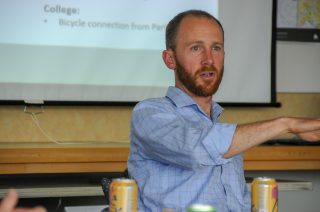

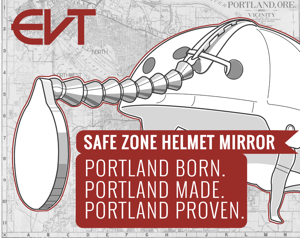
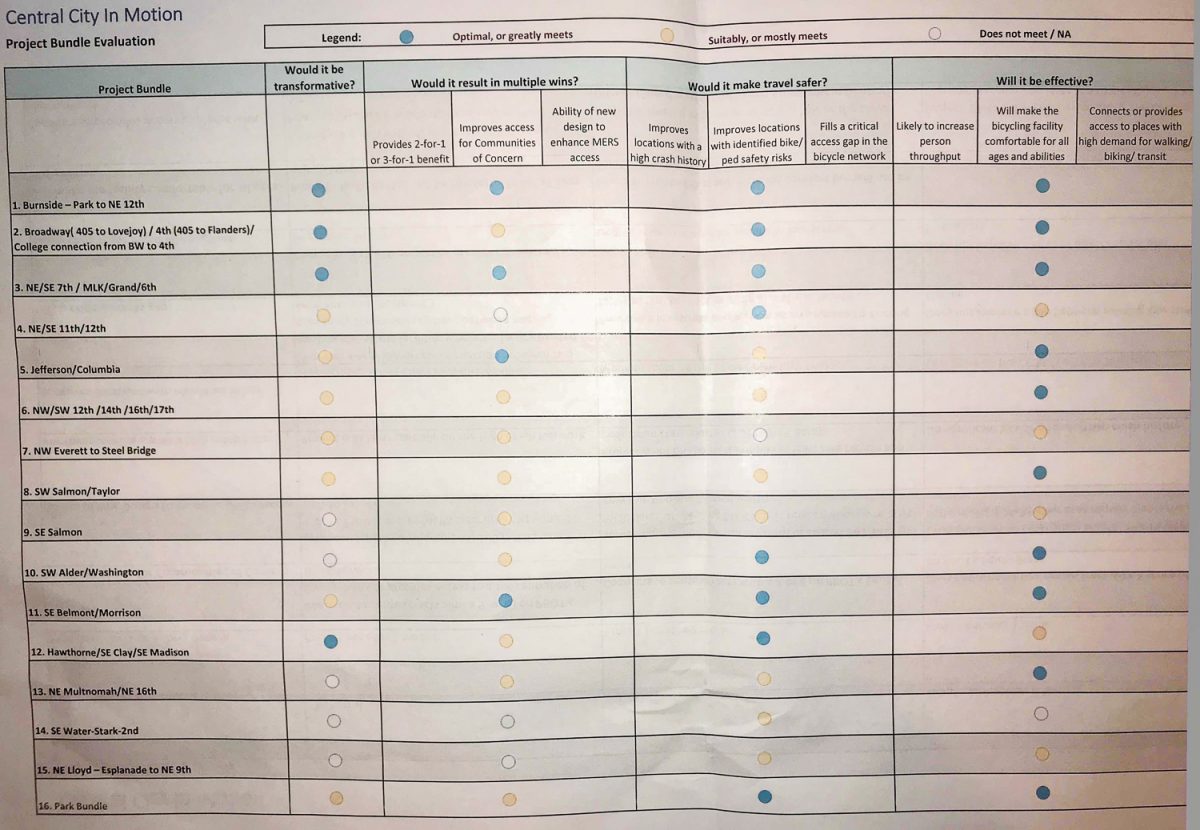
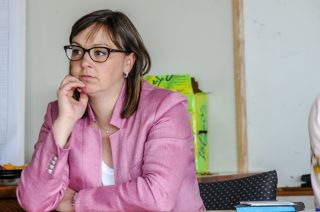
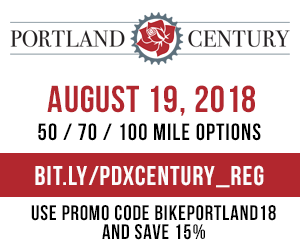
No comments:
Post a Comment